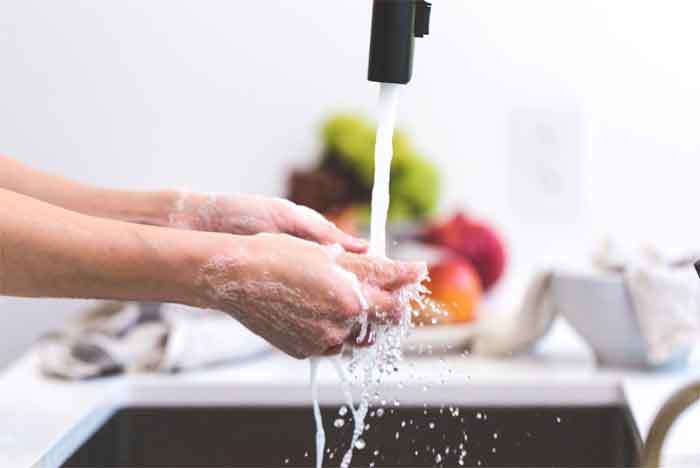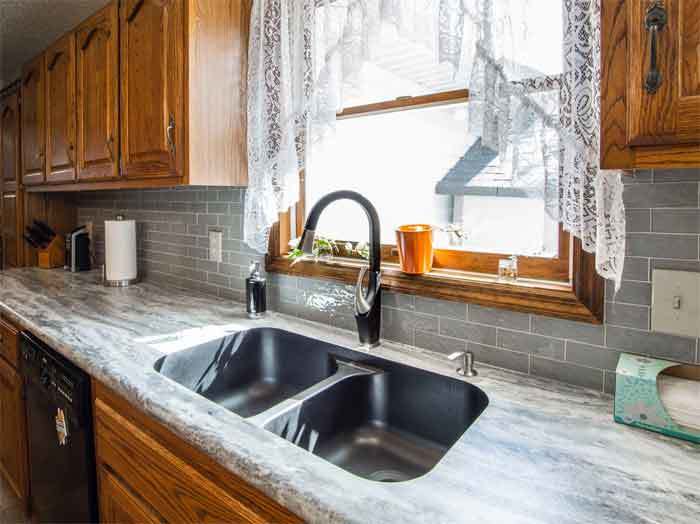Disclaimer: This post may contain affiliate links, meaning we get a small commission if you make a purchase through our links, at no cost to you. For more information, please visit our Disclaimer Page.
One thing that bothers us all is when there’s low water pressure in our kitchen. To be more precise, you need high water pressure in case you want to do dishes or if you just want to rinse some plates after dinner.
However, that’s not possible if you have low water pressure of hot water in the kitchen sink. And, you need to do something about that.
Luckily, we are here to walk you through the guide and show you how to increase hot water pressure in the kitchen sink. So, let’s begin.

How to Increase Hot Water Pressure in Kitchen Sink
In order to increase hot water pressure in the kitchen sink, we first need to determine the cause of the problem. Namely, there are lots of different reasons for low water pressure inside your kitchen sink.
So, the most common causes of low water pressure of hot water in a kitchen sink are:
- Clogged Flow Restrictor
- Moderately Clogged Water Line
Now, let’s see how you can increase hot water pressure in a kitchen sink.
1. Clogged Flow Restrictor
The flow restrictor is quite important since it regulates hot water pressure inside a kitchen sink. If it weren’t for the flow restrictor, hot water will simply burst out of the faucet and squirt all over the kitchen.
Also, if the flow regulator is malfunctioning, that can result in a loss of water pressure when it comes to hot water. And, that’s the case here. So, let’s see how you can fix it and increase the water pressure of hot water inside a kitchen sink.
Step 1 – Unscrew the flow restrictor
First, you will need to remove the flow restrictor out of the faucet. You can do this by unscrewing the flow restrictor with a set of locking pliers.
Also, it is quite important to remember to remove all rubber parts of the faucet in this step. That way, you will make sure that everything is prepared for a cleaning process.
Step 2 – Look for clogs
Since there is a blockage of hot water which results in loss of water pressure, you need to find the clog and remove it. Now, for starters, you will need to inspect the whole faucet and see if there are any clogs.
Usually, the faucet pipe should be partially clogged which blocks hot water to reach the exit properly. And, that’s why there is a loss of water pressure inside your kitchen sink.
Step 3 – Clean it
Once you located the problem, the clog, you will need to clean it properly. Now, there are plenty of ways to get rid of clogs of this kind. One that’s the most effective will require you to use baking soda, vinegar, and a bit of hot water.
First, you need to make a solution with these ingredients and pour that mixture down the faucet. After that, use a bit of hot water and rinse the pipe of clogs or any other accumulations.
Step 4 – Rinse it with hot water
After you successfully removed the clog, it is always a good idea to rinse the area where the clog was. By rinsing the faucet pipe with a bit of hot water, you will actually make sure that this almost never happens again.
Step 5 – Screw the flow restrictor back
Once everything is done, the only thing left for you to do is to screw the flow restrictor back on the faucet. With this thing done, you will be good to go and your hot water pressure will be back at a normal level in your kitchen.

2. Moderately Clogged Water Line
Now, this kind of problem requires you to use a bit more effort and time in order to fix it. After all, clog in the main water line is not that easy to fix.
Now, just follow these steps and you will be fine, so let’s begin.
Step 1 – Turn off the water
In order to safely remove the clog inside the main water line in the kitchen sink, you will need to turn off the water. First, turn off the hot water valve and then turn off the cold water valve to the kitchen sink.
Both of these valves are located under the sink. Left is for cold, and the right valve is usually for hot water.
Step 2 – Remove internal parts
After the water is turned off, it is time to remove all internal parts of the kitchen faucet. This is quite an important step since you will want to remove the clog from the main supply line through the pipe.
The faucet is probably too narrow and tight for this kind of debris to pass through it. That’s why you need to remove all internal parts.
Step 3 – Turn on the water
Next, you will need to turn both cold and hot water on. But, before you do that, place a bucket in your kitchen sink just because the clog will fall from the pipe right into the bucket.
Step 4 – Watch for large debris
Once the water is turned on, due to the high water pressure inside the pipes, you will probably see large debris or a clog coming through the pipe.
This debris is probably larger than the faucet pipe and that’s why it couldn’t pass through the faucet hole.
And, that resulted in low water pressure of hot water in the kitchen sink.
Step 5 – Reassemble kitchen parts
When the clog is removed and the water pressure of hot water is brought back to normal, it is time to reassemble the parts again.
Do it carefully and with patience since you don’t want to misplace some parts and cause an even bigger problem.

Conclusion: Increasing Hot Water Pressure in Kitchen Sink
As we can see, increasing hot water pressure inside a kitchen sink is actually not that hard.
Considering the fact that you need to deal with clogs, it’s already a bit easier. Imagine if the problem is out of your hands and you needed to call a plumber.
That’s not necessary here since you can easily get everything back to normal.

